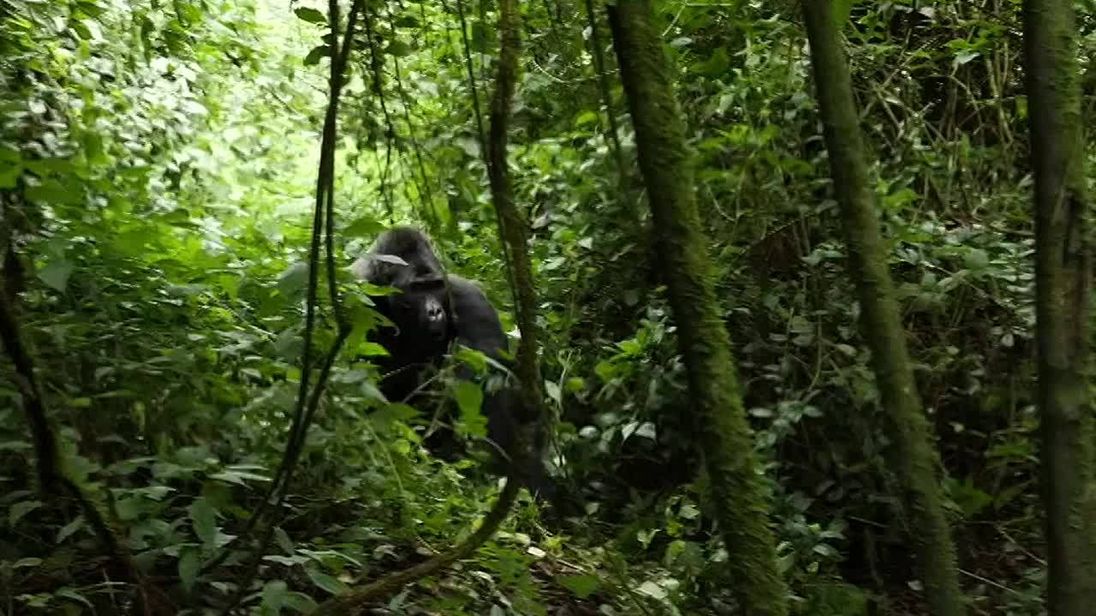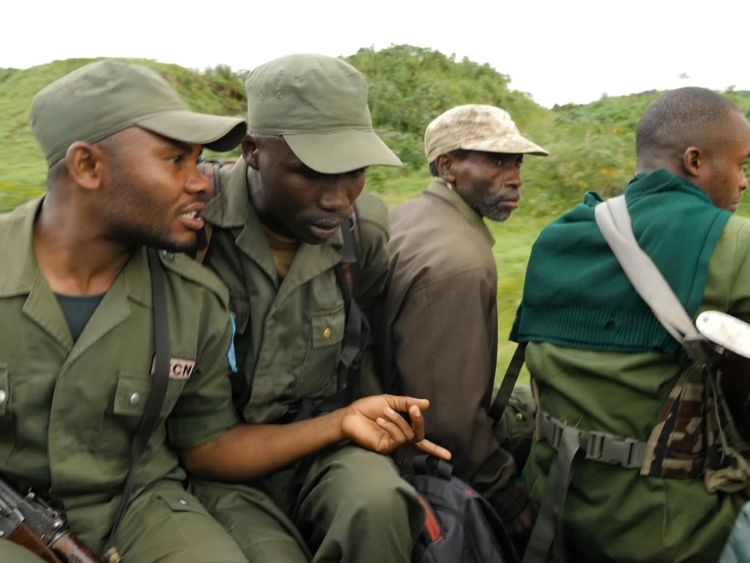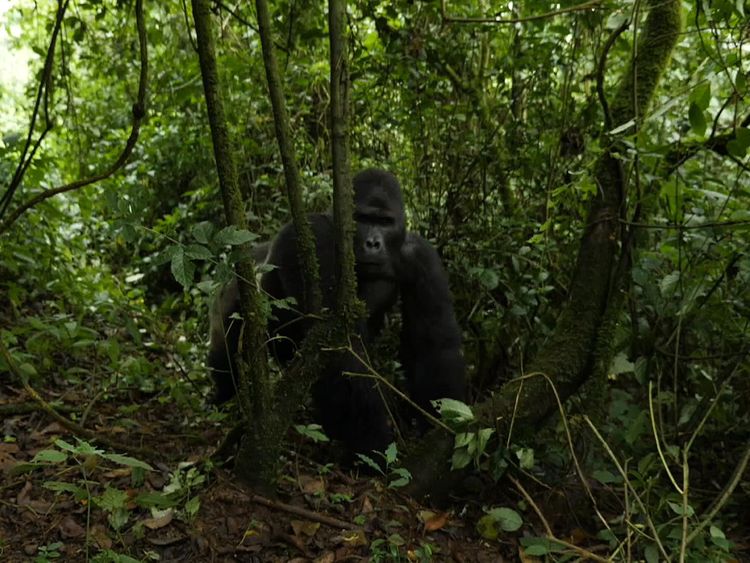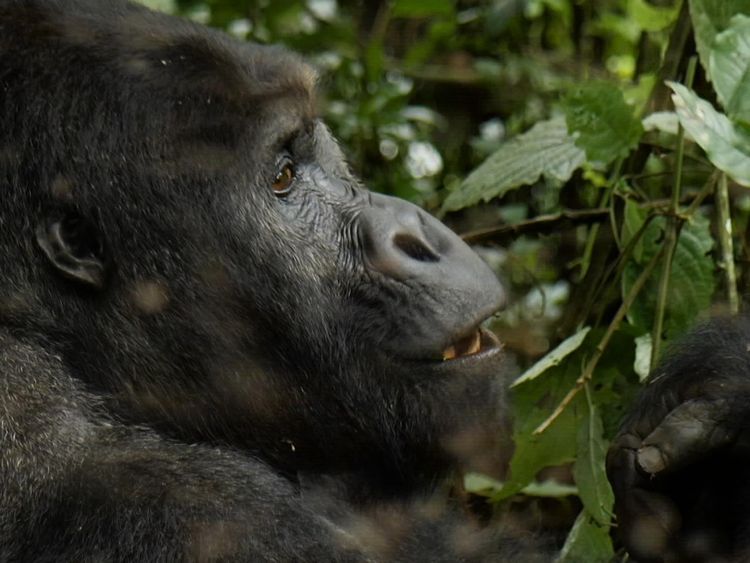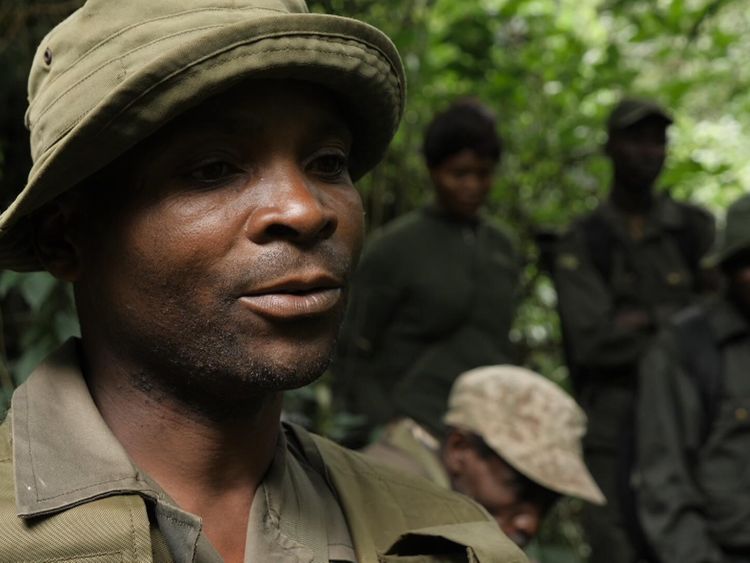By Alex Crawford, Special Correspondent, in Kahuzi-Biega National Park, Democratic Republic of Congo
The rangers of Kahuzi-Biega National Park take part in a parade every morning before setting out to do their jobs guarding one of the world’s most critically endangered group of gorillas.
The parade is aimed at bolstering discipline and morale in a group of men and women who know that every time they step into the jungle their lives are at risk.
Earlier this month, five rangers and a staff driver were killed during an ambush at the sister operation in the Virunga National Park. The risk is real – not just to the rangers trying to protect the gorillas but also to the primates themselves.
Multiple conflicts which have stretched over decades in the DR Congo have led to a catastrophic collapse in the population of the world’s largest primate – a gorilla subspecies which lives in the forests in the east of the country.
It’s estimated only a few thousand of the Grauer’s gorilla exist in the wild – and the recent spike in unrest in this troubled part of the world threatens to put the remaining few at further risk.
Despite attempts to drive out militia groups and poachers from the sprawling parks, it is nigh impossible to do so given the size of them (more than twice the size of Luxembourg), while unrest persists and lack of funding continues.
Virunga is considered the well-to-do park after a documentary led to a large injection of financial help. Kahuzi-Biega views itself as the poorer cousin.
“We need tourists to come so we can generate wealth, offer more jobs and pay our rangers better,” Gloria Mwenge, manager of tourism at Kahuzi-Biega Park, tells Sky News.
“Please tell people we need them to come and visit.”
Without the rangers, the gorillas are prey to poachers or militia – who turn to the gorillas as a source of food or to raise money to fund their fighting operations.
The primates also stand in the way of mining operations in the jungle by militia groups who are trying to, once again, find ways of raising cash for warfare. The rangers are seen as the ‘jungle police’, trying to halt the mining and poaching. They also risk being kidnapped by various militia who’ve turned to asking for ransoms as an alternative way of getting money.
The recent surge in violence in a country described by the United Nations as one of the most complex and longest-running humanitarian crises has impacted on the Lowland gorilla population too. They are now considered critically endangered, meaning they are one step away from becoming extinct in the wild.
While millions in the DR Congo go hungry, the gorillas will continue to be a source of food for the starving.
One former poacher told Sky News: “When we used to catch and kill the gorilla, it would feed about 150 people in the community.”
Although he and his group of four friends have all given up poaching, they’re still going hungry. They all work on a newly established coffee plantation on the edge of the Kahuzi-Biega Park but right now, they’re working without salaries.
They’ve been promised cash only once the coffee production begins to yield results. It’s a tenuous living fraught with problems but with a slither of hope.
The rangers meanwhile are also struggling. The ones we spoke to told us they get paid about $50 (£35) a month. It’s a job which makes them feel lucky but it’s still horribly hard to survive on that pitiful amount.
The rangers we trekked with didn’t even have enough cash to buy themselves drinking water to carry during our hours hacking through thick, wild foliage to try to spot the gorillas.
But Cirimwami Lambert, the chief guide, told us: “We have to protect them, we cannot risk them getting ill.”
From – SkyNews




